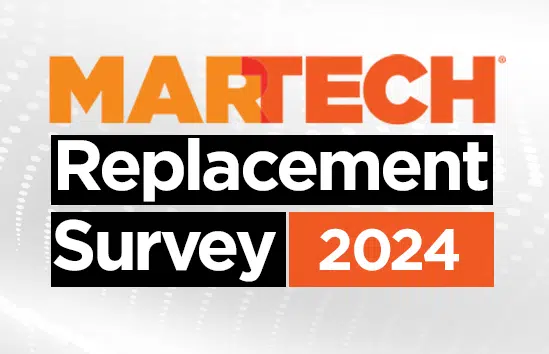The growing use of cloud data warehouses will challenge how we think about martech stacks. It might even lead to an unbundling of applications from the data they activate.
Don’t underestimate the significance of this revolution, already happening under the banner of “composability.”
The meaning of “composability”
Who hasn’t heard talk recently about the “composable CDP” — a solution, that is, that calls itself a CDP but that, rather than ingesting data, activates data located in a data warehouse? The label is a little misleading because “composability” is really a much broader term. Composability really just means the ability to stitch different solutions together.
Providers of digital experience platforms (DXPs), for example, have been talking about composability for at least two years. Typically, these platforms offer a CMS, intelligent content and product recommendation tools, sometimes an integrated CDP, sometimes a digital asset management (DAM) system. What they mean when they say their offerings are composable is that you don’t have to invest in the whole suite. If you have a DAM you like already, you can hang on to it and plug other components of the DXP into it.
Notice, there’s no reference to data warehouses here.
But the sense of composability we’re discussing here is that much narrower one (perhaps misused, but now so commonly misused as to be standard) in which applications are stitched specifically to data located in a data warehouse, the warehouse typically holding company-wide data, not just customer data.
The composable CDP
As we’ll see in another article, this narrower sense of composability doesn’t just relate to CDPs, but it’s in the CDP space that it’s most commonly used. Let’s start with the traditional definition of a CDP:
“Packaged software that creates a persistent, unified customer database that is accessible to other systems.”
The composable CDP does not, essentially, create a persistent, unified customer database, but relies on data located elsewhere. A number of established CDPs, like ActionIQ for example, now offer a composable model alongside their traditional offering. Examples of natively composable CDPs might be Hightouch or Rudderstack, although some would argue that they’re not really CDPs at all.
“Reverse ETL, a fancy name for data extraction, that’s what Hightouch originally did,” said David Raab, founder and CEO at the CDP Institute. “They’ve now expanded to add other modules. Rudderstack or Census are still pretty much reverse ETL vendors and that’s it. I’d need to look at their current product offerings, but anyway that’s how they started out.” Reverse ETL is one way of pulling data from a data warehouse for activation purposes.
“A ‘composable CDP’ is not a CDP,” Raab argued, “it’s a CDP component. We try to avoid the term, but the market is really with it so you can’t avoid it altogether or people won’t know what you’re talking about.” Raab thinks “warehouse-native CDP” is a less misleading term than “composable CDP.” “IT departments relate to the term ‘warehouse-native’ but marketing departments relate to the term ‘composable,’ so you can’t just not use it.”
Dig deeper: Composable CDPs: How do they differ from packaged solutions?
The lakehouse CDP
As if terminology in this space wasn’t already confusing, earlier this year Amperity boldly announced the first “lakehouse CDP.” The first thing to note is that data “lakehouses” (Databricks offers one, as does Google Cloud and Microsoft Fabric) combine the characteristics of data warehouses (organized structured data) and data lakes (large scale raw data).
The second thing to note about Amperity’s offering is that it enables zero-copy data sharing to and from the lakehouse. In other words, customer data can be activated in Amperity by marketing teams without making and storing a copy of that data. This proved to be a controversial claim.
Tasso Argyros, founder and CEO at ActionIQ, has written about the different ways composable CDPs can activate data from a data warehouse (or lakehouse): ETL (batch data copying); data sharing through a data connector; or query pushdown in which data is queried in the warehouse but not copied (ActionIQ’s approach).
Of the zero-copy option offered by Amperity (and Salesforce), he said:
“Despite their imaginative language, the data is again copied from the customer’s warehouse to the vendor’s own warehouse and CDP. The data copy is now simpler and faster, which is an enhancement. However, it still results in data residing in two locations with divergent data models as soon as the data is edited or enhanced.”
Tasso Argyros, LinkedIn
We spoke to Barry Padgett just before he transitioned from the CEO role to being an advisor at Amperity. “Instead of pulling data out of the data warehouse and shoving it into some other system, that other system can just read that data directly from the system. It doesn’t need to pull that data and make a copy,” he said.
He was familiar with the Argyros argument. “We exist in a noisy space where people have a lot to say,” he mused. “If you want to pull data from the lakehouse and not do anything interesting to it, you’re sort of limited. You can just read the data or you can query some subset of it. Of course we have to read the data — if we don’t read the data our system is useless. As an output of what we do, we create data.” Amperity’s AI capabilities are in play here. “That’s not copying data from the source. We’re deriving insights from that data by running AI. We’re building new data assets; that’s the distinction.”
The new data asset can be shared with Amperity’s CDP, but that’s not the same as copying the original data, Padgett argued. “I get that it’s frustrating to have nuance, but there’s just nuance here.”
Why composable (or lakehouse) CDPs and why now?
Lakehouse, said Padgett, is not Amperity’s term. It rose to prominence with some of the marketing language Databricks was using. He explained: “Ten years ago we were building data lakes and consolidating data. Then there was the rise of the cloud data warehouse. The warehouse was great for running SQL queries; the data lake was good for more complicated stuff, especially AI. Now, what’s the name for that combined infrastructure where you can do all that stuff? ‘Lakehouse’ seemed pretty close. It really is just data lake plus data warehouse.”
But doesn’t a lakehouse CDP depend on customers having…lakehouses? “It does seem like a space that’s really hot right now,” said Padgett. “We’re certainly seeing all the major vendors following a path there; we’re anticipating that AWS will join the party.” Amperity created something it calls Bridge, a layer that adapts Amperity’s functionality to the various lakehouses out there. “As new platforms emerge, we’ll just make a new Bridge.”
The traditional CDP evolved as a solution, said David Raab, because companies were not providing actionable customer profiles through their IT deparment or from their data warehouses — certainly not for marketers. “What’s happened now is that the data warehouse has gotten a little better in terms of technology,” he explained, “and the motivation for IT departments to meet those needs has gotten much stronger, because not only marketing, but customer service, sales and operations are all looking for usable customer profiles. Once it becomes an enterprise problem rather than a marketing department problem, the enterprise IT and data teams become engaged in looking for solutions.”
Extending the data warehouse can contribute to such a solution and there’s also value in leveraging an existing investment rather than building something new. “What composable does,” he said, “is give them a few more tools because instead of having to build a data extraction or ETL tool from scratch they can go out and buy one that is quite nice and quite mature. Composable CDPs are making their money by making what IT departments want to do a little easier.”
But whether an organization leverages a traditional, packaged CDP or leverages its data warehouse using so-called composable tools, it’s attempting to meet the same need for actionable, unified customer profiles.
Composable CDPs are, however, only part of the composability revolution that seems set to change the face of the marketing stack. Customer engagement platforms are now playing the same game, as we’ll see in the next article in this series.
Dig deeper: The truth behind martech stack composability
























































![Key Metrics for Social Media Marketing [Infographic] Key Metrics for Social Media Marketing [Infographic]](https://www.socialmediatoday.com/imgproxy/nP1lliSbrTbUmhFV6RdAz9qJZFvsstq3IG6orLUMMls/g:ce/rs:fit:770:435/bG9jYWw6Ly8vZGl2ZWltYWdlL3NvY2lhbF9tZWRpYV9yb2lfaW5vZ3JhcGhpYzIucG5n.webp)



















